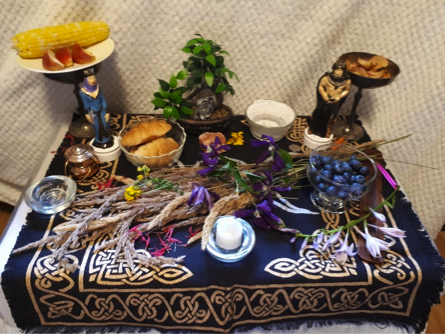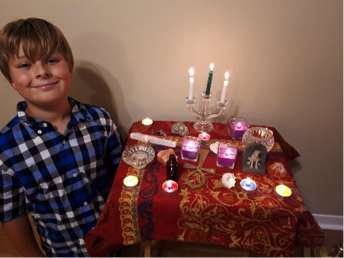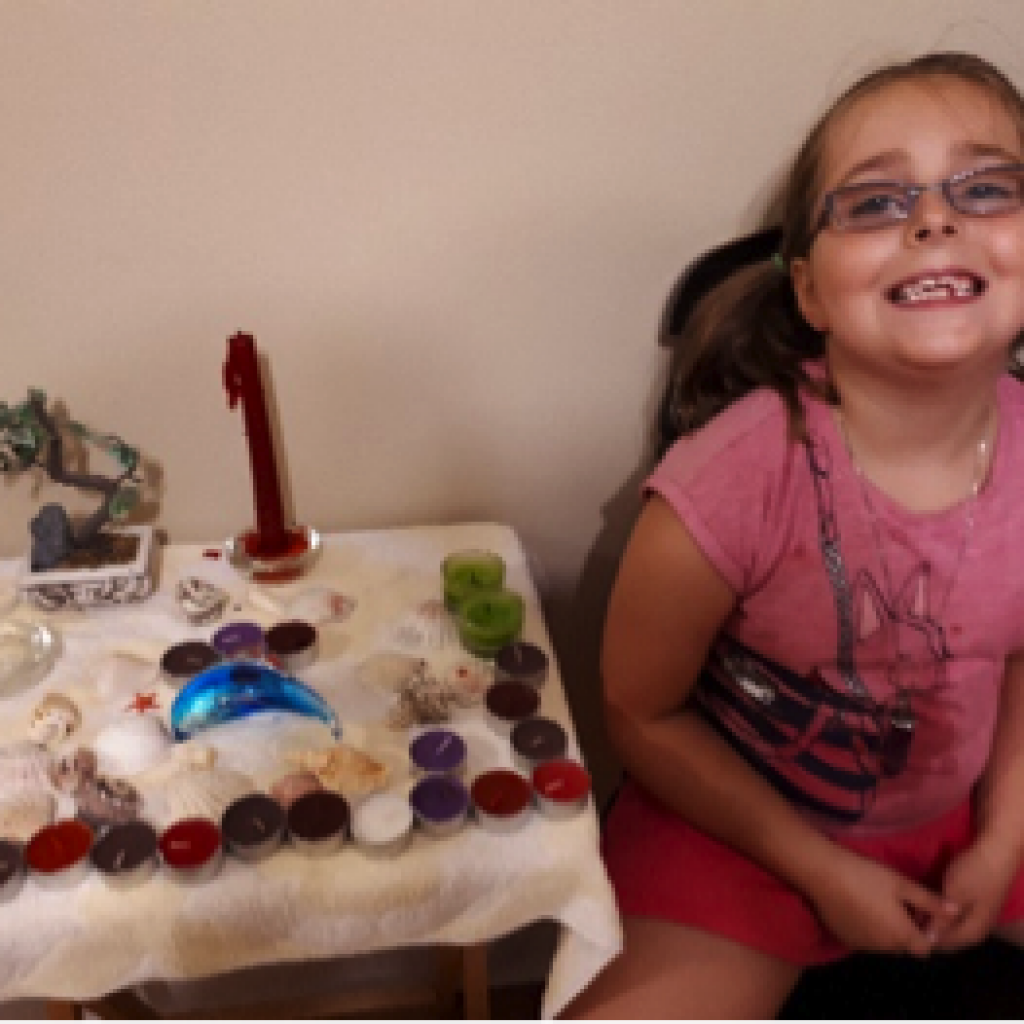Which Witch is Witch? Witchcraft and Tarot – Today we talk about the Altar.
This column is proudly sponsored by: The Purple Broomstick – “Cornwall’s authentic witch store with the best prices in town”, Located at 235 Guy Street in Cornwall, ON
The altar is one of the most important and vital parts of one’s magic repertoire. Here is “sacred space”. A private place where the bustle of daily life disappears. It is a place to be grounded, safe, sit and unwind, cast spells and show your creative side.
Below is the Altar for The Sabbat “Lughnasadh”

Your altar can be a table (if you have room) or just a book shelf if you have toddlers or not much space. Witchcraft works with correspondences (objects that go together.) The East end of an altar is morning, the element of air, (bell, feather or incense.) The south is noon, element of fire (candle.) The west is evening, element of water, (goblet or sea shell.) The north is midnight, the element is earth (plant, salt or crystal.) The center is Spirit, Goddess (on the left) and God (on right.) An altar cloth is optional. Decorating a special place used for magical purposes is a beautiful experience that refreshes immensely. The decorations can change as often as you wish, depending on the day, festival, moon time or season. The Purple Broomstick has many items that help create beautiful altar.
Below left is Logan Carter and his altar and below right is Hanna Carter and her altar.


Today, as in pagan times, witches celebrate the Sabbat of Imbolc (Feb. 1) dedicated to the Goddess Brigit. Goddess of domestic animals, healing, poetry, craft and forge work, midwifery, and the kitchen hearth to name a few. If you know someone (include yourself) who needs healing, take a candle and put it in your hands. Ground yourself by breathing deeply and think of this person. Let your good intentions toward this person fill the candle. Then light the candle and say, “Goddess Brigit, generous lady of healing, peace weaver, gold-bender, keeper of the flame I invoke your name for the healing of (name). May his/her health improve from this moment on. Blessed be.” When finished give thanks to Brigit.
Tarot:
No one knows where Tarot comes from. One theory is: when the Romani people were forced to leave the Middle East they brought Tarot to Europe. We know Tarot in the 14th century was a playing card deck. The 18th century saw the cards evolve into what they are now.
Anyone can learn to read Tarot cards. It just takes patience and a willingness to learn. One activity you can do is shuffle the cards every morning and pick one card. Don’t look at it until bedtime. Keep a journal of how the card described your day. Doing this, gives you experiences with all the cards which you can apply to readings.
Happy Imbolc. May Brigit’s Mantle enfold you and keep you warm.
Blessed be until next time.




